A “Come, Follow Me” YouTube Virtual Fireside Series Sponsored by
The Interpreter Foundation, Book of Mormon Central, and FAIR
The next presentation will be on Sunday, October 17, at 6:00 PM Mountain Time. Jeffrey Bradshaw will be speaking on “Freemasonry and the Origins of Latter-day Saint Temple Ordinances.” A flyer is available here.
Introduction
[Joseph Smith] lived his life in crescendo, it grew in intensity and volume as he approached its close. Higher and still higher the inspiration of God directed his thoughts; bolder were his conceptions, and clearer his expositions of them. So far was he from being a “fallen prophet” in the closing months of his career, as apostates charged, that he grew stronger with each passing day; more impressive in weight of personal character, and charm of manner; for he preserved amid all the conflicts and trials through which he passed—until the shadows of impending death began to fall upon him in Carthage prison—the natural sweetness of his nature, and the intellectual playfulness characteristic of him from boyhood—so do not fallen prophets (Elder B. H. Roberts, Introduction to Joseph Smith, Jr. History of the Church of Jesus Christ of Latter-day-Saints, 6:xli-xlii).
In support of the 2021 “Come Follow Me” curriculum, this virtual fireside series seeks to enrich individual and family scripture study through a series of livestream YouTube presentations by faithful scholars on selected capstones of Joseph Smith’s final years. An initial presentation on the events of Joseph Smith’s martyrdom on June 27 the anniversary of Joseph Smith’s martyrdom) will commemorate that event. Later, from October 17 through November 28, weekly firesides will describe events and doctrines relating to Joseph Smith’s glorious, final teachings—including the restoration of the fulness of temple ordinances and blessings, his courage in the face of continued attempts on his life, the preparation of the Quorum of the Twelve for his departure, boldly countering the aspirants for leadership of the Church, the successful gathering of the main body of the Saints under the direction of Brigham Young, and sealing his prophetic life and testimony with his blood. Time will be set aside for viewer questions following each presentation.
Presentations are scheduled for Sunday evenings at 6:00 PM Mountain Time. Online links for viewing the events will be available a few weeks prior to each presentation.
Schedule and Abstracts
Presentations will be introduced by Richard E. Turley, Jr. Before his retirement, Rick served as assistant Church historian and later as managing director of the Church’s Public Affairs Department.
June 27 (anniversary of Joseph Smith’s martyrdom)
R. Jean Addams: True to the End: The Culmination of the Earthly Ministry of the Prophet Joseph Smith in His Martyrdom at Carthage
This fireside will begin by describing the premonitions of Joseph Smith about his impending death in the years preceding his tragic martyrdom. We will review the series of circumstances that led to his and his brother Hyrum’s demise at the hands of the mob that stormed the jail in Carthage. The little-known story of Joseph and Hyrum being rowed across the Mississippi River in the very early hours of the Sunday prior to their fateful trip to Carthage to consider options and secure legal counsel while out of the reach of his enemies will be told. The story demonstrates the devotion of the Prophet to his people and to the incredibly challenging destiny God had appointed for him. It further demonstrates the love of the Smith family and the Saints for their son, husband, brother, and friend. In all these events, the hand of God was clearly present during the tragedy and eventual triumph of the Prophet’s mission as a witness of Jesus Christ and His Restored Church.
October 17 (see Come, Follow Me Lesson on Doctrine and Covenants 124; October 25–31)
Jeffrey M. Bradshaw: Freemasonry and the Origins of Latter-day Saint Temple Ordinances
Because Joseph Smith became a Mason not long before he began to introduce others to the Nauvoo endowment, some suppose that Masonry must have been the starting point for his inspiration on temple matters. The real story, however, is not so simple. Though the introduction of Freemasonry in Nauvoo helped prepare the Saints for the endowment — both familiarizing them with elements they would later encounter in the Nauvoo temple and providing a blessing to them in its own right — an analysis of the historical record provides evidence that relevant truths about the plan of salvation, priesthood and temple doctrines, authority, and ordinances were revealed to the Prophet during the course of his early ministry, long before he got to Nauvoo. Further, many aspects of Latter-day Saint temple worship are well attested in the Bible and elsewhere in antiquity. Of course, temple ordinances — like all divine communication — must be adapted to different times, cultures, and practical circumstances. Happily, since the time of Joseph Smith, necessary alterations of the ordinances have been directed by the same divine authority that restored them in the first place.
October 24 (See Come, Follow Me Lesson on Doctrine and Covenants 129–132; November 8–14)
Brian C. Hales: Doctrine and Covenants 132: A Series of Questions and Discussions
Doctrine and Covenants section 132 is undoubtedly the most controversial of all of Joseph Smith’s revelations because it mentions the practice of plural marriage. Ironically, it is also one of the least discussed of all of Joseph’s official teachings for the same reason. The Gospel Topics Essays encourage a new transparency on this subject including inquiring into specific historical and doctrinal points found in the revelation. This illustration-rich fireside presentation focuses on its historical context and provenance. It will also address questions like what is the “new and everlasting covenant” (vv. 4–6), the “one” man “anointed and appointed” (vv. 7, 18, 19), the “law” (v. 34), the “holy anointing” and polyandry (vv. 41-42), the “offer” Emma is to “partake not of” (51), and “the law of Sarah” (v. 65). In addition, did Joseph “trespass” against Emma and why does the revelation threaten her to be “destroyed” (vv. 54, 56, 64)? Other inquiries include: Does D&C 132 command believers then or today to be polygamists? How does D&C 132 describe Joseph Smith’s zenith teaching, which is not polygamy?
October 31 (See Come, Follow Me Lesson on Doctrine and Covenants 129–132; November 8–14)
Ronald K. Esplin: “All the Measures of Joseph” – Keys and Continuity in the Succession of 1844
Joseph Smith well understood that Nauvoo provided his final opportunity to finish the foundation of the Restoration and complete the mission he had been given. He also knew that his time would be short for “according to his prayers God had appointed him elsewhere”— and others would finish the work he had begun.
It is not surprising then, in retrospect, that he wasted no time once a majority of the Twelve had returned to Nauvoo from Britain, now proven as a successful administrative and leadership quorum, to put them in the harness in new ways. Unwilling to wait until October conference, Joseph called a “special conference” in August 1841, the month following their return, to announce to the saints that the Quorum of the Twelve apostles would have enlarged responsibilities, overseeing with the First Presidency the entire church, rather than being restricted to carrying the gospel abroad, outside the stakes, as before. “Business of the Church given to the 12,” noted Willard Richard in his diary about this event that portended important future developments. From that point forward, Young and his fellow apostles were involved in all aspects of church governance and development. They were at Joseph’s side both publicly and in private, from the first temple-related ordinances in May 1842 through administration of additional ordinances and organization of the Council of Fifty in 1844.
This presentation offers an overview of how these new assignments, responsibilities and opportunities prepared Brigham Young and the Quorum of the Twelve to “carry the burden in the heat of the day,” even in Joseph’s absence. It will show that Joseph saw to them receiving “every key and every power that he ever held himself before God,“ preparing them and fully empowering them to, as they proclaimed, “carry out all the measures of Joseph”—to complete on the foundation he laid the edifice he had envisioned and begun.
November 7 (See Come, Follow Me Lesson on Doctrine and Covenants 129–132; November 8–14)
Barbara Morgan Gardner. Joseph Smith’s Teachings and Practices Relating to Eternal Marriage and the Eternal Family
The supernal doctrines and practices revealed to Joseph Smith about eternal marriage and family relationships are among the most precious truths of the Restoration of the Gospel. However, because the doctrine of “eternal marriage” seemed to fly in the face of the Savior’s own teachings on the subject (see Matthew 22:30; Luke 20:34-35). In this presentation I will address specific questions relating to doctrines such as the new and everlasting covenant, the patriarchal priesthood, priesthood order, and covenants, as well as associated practices that persist to our day. In doing so, I will draw on the rich doctrines revealed in Doctrine and Covenants 132 and 128. I will also discuss the additional line-upon-line unfolding of the doctrines and practices relating to temple ordinances that occurred during the ministry of Wilford Woodruff.
November 14 (See Come Follow Lesson on Doctrine and Covenants 135–136; November 22–281)
Jeffrey M. Bradshaw. “There’s the Boy I Can Trust”: Dennison Lott Harris’ First-Person Account of the Conspiracy of Nauvoo and Events Surrounding Joseph Smith’s “Last Charge” to the Twelve Apostles
A well-known account from early Church history describes how, in the spring of 1844, two young men, Dennison Lott Harris and Robert Scott, helped protect Joseph Smith from dissidents plotting against his life. We will present new research on these events, including the role of William Law, first counselor to the Prophet. Almost completely unknown, however, is Dennison’s account of his subsequent role as a firsthand witness to events that appear to have taken place on the morning of 26 March 1844, just prior to the meeting in which Joseph Smith gave his “Last Charge” to the Quorum of the Twelve and “roll[ed] the kingdom off [his] shoulders” onto theirs in the presence of the Council of Fifty. In addition, the article includes a discussion of the significance of apostolic succession then and now.
November 21 (See Come Follow Lesson on Doctrine and Covenants 135–136; November 22–28)
Joseph I. Bentley and John W. Welch: Road to Martyrdom: Legal Aspects of Joseph Smith’s Last Days
This fireside will examine several lesser-known aspects of Joseph Smith’s road to martyrdom. In addition to mentioning outside opponents and background legal factors, we will focus on the motives of those Nauvoo insiders who were most instrumental in causing the prophet’s death. How early did their efforts begin? What were their three principal plans to kill him? Was Joseph’s order as Mayor to suppress the Nauvoo Expositor the main cause of his death on June 27, or was there another legal pretext?
As pressures mounted, why did Joseph and Hyrum cross the Mississippi River early Sunday morning, June 23? What did they do in Iowa? Why did they return to Nauvoo and go on Monday to Carthage? Why then did all the members of the Nauvoo City Council leave Joseph and Hyrum alone, trapped in Carthage? Where were the Twelve Apostles and Joseph’s friends? Where was Governor Ford, and the Carthage Greys? Who was in the mob that stormed the Carthage Jail, and where did they go? How was this all pulled off? Was it a perfect storm?
In its legal aftermath, what was the final outcome of the many Expositor riot cases? Did the Mormon insiders get compensated for the loss of their press? What were the legal charges that put Joseph and Hyrum Smith in Carthage Jail until they were killed, and how did those legal matters finally play out? Did any members of the mob face an earthly justice? How did the martyrdom influence subsequent developments and the desired goal of driving all Mormons from Illinois?
November 28 (See Come, Follow Me, Doctrine and Covenants 135–136; November 22-28)
R. Jean Addams: Aftermath of the Martyrdom: The Aspirants to the Mantle of Joseph Smith and the Leadership of Brigham Young in the Months Following the Martyrdom
Feelings of foreboding were experienced by some members of the Quorum of the Twelve while serving missions in the northeastern states on June 27, 1844, the day the Prophet Joseph Smith and his brother Hyrum were assassinated. Their promptings led them to return to Nauvoo in haste. We will discuss Sidney Rigdon’s efforts to assume guardianship of the Church in August 1844 and Brigham Young’s resounding response. Then, we will explore the various claims and results of efforts by several aspirants to claim the mantle of the deceased Prophet Joseph following. Next, we will examine the solidifying influence of the Quorum of the Twelve Apostles, led by their president Brigham Young. Finally, I will recount the resulting exodus of the majority of the Saints from western Illinois to Iowa in early 1846. Young continued to deal with the “scattering” of certain individuals and their adherents for several more years and was required to provide the counsel and direction to those apostles that were assigned to facilitate the trek westward from Kanesville in the years that followed.
Biographical Information
R. Jean Addams
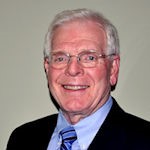
R. Jean Addams is a lifetime Mormon History enthusiast, independent historian, and author. He and his wife Liz reside in Woodinville, Washington. He recently completed his twentieth year as a volunteer Institute of Religion instructor. He holds a BS in Accounting and an MBA from the University of Utah and is happily retired. Addams has presented and published several articles dealing with the “Redemption of Zion” and the “Church of Christ (Temple Lot).” His most recent articles include: “Zion’s Printing & Publishing Company: From the Redemption of Zion to Corporation,” (Journal of Mormon History, April 2020) ; “The Return of the LDS Church (1900-1907) to Jackson County and the Redemption of Zion,” (John Whitmer Historical Association Journal, Fall/Winter 2018); “The History and Acquisition of the Original Temple Lot Property in Independence, Jackson County, Missouri,” (Mormon Historical Studies, Spring 2019); and “A Contest for Sacred Space,” The Ancient Order of Things: Essays on the Mormon Temple (Signature Books, 2019). He is the author of Upon the Temple Lot: The Church of Christ’s Quest to Build the House of the Lord (John Whitmer Books, 2010). In 2021, he published “The Past and the Future of the Temple Lot in Jackson County, Missouri” as a chapter in the book The Temple: Past, Present, and Future. Addams is a past president of the John Whitmer Historical Association, and a member of the Mormon History Association, the Sons of the Utah Pioneers, and the Missouri Mormon Frontier Foundation. His interests, besides family, include fishing and skiing.
Joseph I. Bentley
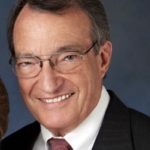
Joe Bentley recently returned after serving a Manhattan Temple Mission with his wife Marilyn. For three years, they presided over the Newport Beach CA Temple as President and Matron (2014-17). Previously, they were co-directors over Hosting and Humanitarian Services at the BYU Jerusalem Center (2010-12). Joe practiced law for 35 years at the international law firm of Latham & Watkins in Los Angeles and Orange County (1968-2003). He focused mainly on real estate transactions and did the legal work to acquire the land and permits to build the Newport Beach Temple. Prior to being the International Chair of the J. Reuben Clark Law Society (2006-07), he helped to found its Orange County chapter (1989-90). While a law student at the University of Chicago (J.D. in 1968), he and Professor Dallin H. Oaks began a 10-year project researching some of Joseph Smith’s financial and legal problems. It was finally published in the 1979 BYU Studies as “Joseph Smith & Legal Process: In the Wake of the Steamboat Nauvoo.” He later authored two articles in Macmillan’s Encyclopedia of Mormonism (1992) — as the “Legal Trials of Joseph Smith” and the “Martyrdom of Joseph and Hyrum Smith.” Most recently, BYU Studies published his article, “Road to Martyrdom: The Last Legal Cases of Joseph Smith” (2016). That work is the basis for his comments on this program. He and Marilyn still live in Newport Beach. They have five children and 22 grandchildren.
The presentation updates research published in the following article: Joseph I. Bentley. “Road to Martyrdom: Joseph Smith’s last legal cases.” BYU Studies Quarterly 55, no. 2 (2016): 9–73. https://byustudies.byu.edu/article/road-to-martyrdom-joseph-smiths-last-legal-cases/.
Jeffrey M. Bradshaw
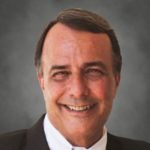 Jeffrey M. Bradshaw (PhD, Cognitive Science, University of Washington) is a Senior Research Scientist at the Florida Institute for Human and Machine Cognition (IHMC) in Pensacola, Florida (www.ihmc.us/groups/jbradshaw; en.wikipedia.org/wiki/Jeffrey_M._Bradshaw). His professional writings have explored a wide range of topics in human and machine intelligence (www.jeffreymbradshaw.net). Jeff has been the recipient of several awards and patents and has been an adviser for initiatives in science, defense, space, industry, and academia worldwide. Jeff has written detailed commentaries on the Book of Moses and Genesis 1–11 and on temple themes in the scriptures. For Church-related publications, see www.TempleThemes.net. Jeff was a missionary in France and Belgium from 1975–1977, and his family has returned twice to live in France. He and his wife, Kathleen, are the parents of four children and fifteen grandchildren. From July 2016-September 2019, Jeff and Kathleen served missions in the Democratic Republic of Congo Kinshasa Mission office and the DR Congo Kinshasa Temple. Jeff serves as a temple ordinance worker at the Meridian Idaho Temple and as a church service missionary for the Church History department, with a focus on central Africa. He and Kathleen live in Nampa, Idaho.
Jeffrey M. Bradshaw (PhD, Cognitive Science, University of Washington) is a Senior Research Scientist at the Florida Institute for Human and Machine Cognition (IHMC) in Pensacola, Florida (www.ihmc.us/groups/jbradshaw; en.wikipedia.org/wiki/Jeffrey_M._Bradshaw). His professional writings have explored a wide range of topics in human and machine intelligence (www.jeffreymbradshaw.net). Jeff has been the recipient of several awards and patents and has been an adviser for initiatives in science, defense, space, industry, and academia worldwide. Jeff has written detailed commentaries on the Book of Moses and Genesis 1–11 and on temple themes in the scriptures. For Church-related publications, see www.TempleThemes.net. Jeff was a missionary in France and Belgium from 1975–1977, and his family has returned twice to live in France. He and his wife, Kathleen, are the parents of four children and fifteen grandchildren. From July 2016-September 2019, Jeff and Kathleen served missions in the Democratic Republic of Congo Kinshasa Mission office and the DR Congo Kinshasa Temple. Jeff serves as a temple ordinance worker at the Meridian Idaho Temple and as a church service missionary for the Church History department, with a focus on central Africa. He and Kathleen live in Nampa, Idaho.
The presentations update research published in the following articles:
- Bradshaw, Jeffrey M. “Freemasonry and the Origins of Modern Temple Ordinances.” Interpreter: A Journal of Mormon Scripture 15 (2015): 159-237. https://journal.interpreterfoundation.org/freemasonry-and-the-origins-of-modern-temple-ordinances/ .
- ———. “‘There’s the boy I can trust’: Dennison Lott Harris’ first-person account of the conspiracy of Nauvoo and events surrounding Joseph Smith’s “Last Charge” to the Twelve Apostles.” Interpreter: A Journal of Mormon Scripture 21 (2016): 23-118. https://journal.interpreterfoundation.org/theres-the-boy-i-can-trust-dennison-lott-harris-first-person-account-of-the-conspiracy-of-nauvoo-and-events-surrounding-joseph-smiths-last-charge/ .
Ronald K. Esplin
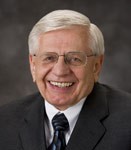 Ron Esplin was born in Cedar City, Utah, raised in the Salt Lake Valley, and graduated with a degree in History from the University of Utah. He has graduate degrees in History from the University of Virginia and Brigham Young University. He married the former Judith Mortensen and they have seven children, twenty-four grandchildren and three great-grandchildren. For eight years in the 1970s, Ron was a historian in History Division of the Church Historical Department with church historian Leonard Arrington, and then for 25 years was a professor of church history and a senior research historian at the Joseph Fielding Smith Institute for Latter-day Saint History at Brigham Young University, 16 of those years as director of the institute. From 2002 until 2012 he served as managing editor of the Joseph Smith Papers. He is also a past president of the Mormon History Association. Today he serves as a general editor of The Joseph Smith Papers and as director of the Brigham Young Center. His own publications are mainly about Joseph Smith and Brigham Young and their periods of Latter-day Saint history.
Ron Esplin was born in Cedar City, Utah, raised in the Salt Lake Valley, and graduated with a degree in History from the University of Utah. He has graduate degrees in History from the University of Virginia and Brigham Young University. He married the former Judith Mortensen and they have seven children, twenty-four grandchildren and three great-grandchildren. For eight years in the 1970s, Ron was a historian in History Division of the Church Historical Department with church historian Leonard Arrington, and then for 25 years was a professor of church history and a senior research historian at the Joseph Fielding Smith Institute for Latter-day Saint History at Brigham Young University, 16 of those years as director of the institute. From 2002 until 2012 he served as managing editor of the Joseph Smith Papers. He is also a past president of the Mormon History Association. Today he serves as a general editor of The Joseph Smith Papers and as director of the Brigham Young Center. His own publications are mainly about Joseph Smith and Brigham Young and their periods of Latter-day Saint history.
The presentation updates research published in the following article: Ronald K. Esplin. “Joseph, Brigham and the Twelve: A succession of continuity.” BYU Studies 21, no. 3 (1981): 301-41. https://scholarsarchive.byu.edu/byusq/vol21/iss3/5/ .
Barbara Morgan Gardner
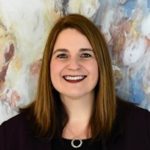 Barbara Morgan Gardner is associate professor of Church history and doctrine at Brigham Young University. A native of Salem, Oregon, she holds a master’s degree in educational leadership and foundations and a doctorate in educational psychology. She also did postdoctoral work at Harvard University. Dr. Gardner was institute director in Boston, Massachusetts, serving more than 100 colleges and universities in the area and acting as chaplain at Harvard University and MIT. She continues to serve as chaplain-at-large for The Church of Jesus Christ of Latter-day Saints. She also serves on the BYU Interfaith Outreach Council. She and her husband, Dustin Gardner, are the parents of two daughters and make their home in Highland, Utah.
Barbara Morgan Gardner is associate professor of Church history and doctrine at Brigham Young University. A native of Salem, Oregon, she holds a master’s degree in educational leadership and foundations and a doctorate in educational psychology. She also did postdoctoral work at Harvard University. Dr. Gardner was institute director in Boston, Massachusetts, serving more than 100 colleges and universities in the area and acting as chaplain at Harvard University and MIT. She continues to serve as chaplain-at-large for The Church of Jesus Christ of Latter-day Saints. She also serves on the BYU Interfaith Outreach Council. She and her husband, Dustin Gardner, are the parents of two daughters and make their home in Highland, Utah.
The presentation updates research published in the following chapters:
- Jensen, R. Devan, Michael A. Goodman, and Barbara Morgan Gardner. “‘Line upon line’: Joseph Smith’s growing understanding of the eternal family.” In Raising the Standard of Truth: Exploring the History and Teachings of the Early Restoration, edited by Scott C. Esplin, 282–308. Provo and Salt Lake City, UT: BYU Religious Studies Center and Deseret Book, 2020.
- Hedges, Andrew H. “Eternal marriage and plural marriage.” In Raising the Standard of Truth: Exploring the History and Teachings of the Early Restoration, edited by Scott C. Esplin, 309–22. Provo and Salt Lake City, UT: BYU Religious Studies Center and Deseret Book, 2020.
Brian C. Hales
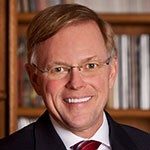 Brian is the author or co-author of seven books dealing with Joseph Smith and plural marriage. He and his wife, Laura Hales are co-webmasters of JosephSmithsPolygamy.org. He is also the author of several articles dealing with the origin of the Book of Mormon.
Brian is the author or co-author of seven books dealing with Joseph Smith and plural marriage. He and his wife, Laura Hales are co-webmasters of JosephSmithsPolygamy.org. He is also the author of several articles dealing with the origin of the Book of Mormon.
Among other relevant publications are these widely acclaimed works:
- Hales, Brian C. Joseph Smith’s Polygamy. 3 vols. Salt Lake City, UT: Greg Kofford Books, 2013.
- Hales, Brian C., and Laura H. Hales. Joseph Smith’s Polygamy: Toward a Better Understanding. Draper, UT: Greg Kofford Books, 2015.
John W. Welch
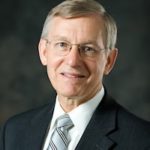 John W. (“Jack”) Welch has been a law professor at BYU since 1980, where he has taught classes on Business Associations, Tax-Exempt Organizations, Ancient Near Eastern Law in the Book of Mormon, Jewish and Roman Law in the New Testament, and Joseph Smith and Early American Law. He and his wife Jeannie received master’s degrees at BYU in 1970, and then lived in England and North Carolina, where he did graduate work at Oxford and received his JD from Duke University. He practiced law with O’Melveny & Myres in Los Angeles 1975-1980, and has been a longtime member of the Society of Biblical Literature and of the Jewish Law Association. Over the years, Jack’s work on chiasmus has become widely known in scholarly and religious circles. His innovative studies about the trial of Jesus, the Sermon on the Mount, and the Good Samaritan have been published in BYU Studies and elsewhere. He founded the Foundation for Ancient Research and Mormon Studies (FARMS) in 1979, and was one of the editors of Macmillan’s Encyclopedia of Mormonism (1992). Having served for 26 years as the Editor in Chief of BYU Studies, he currently volunteers as the chair and editor in chief of Book of Mormon Central. His book entitled The Parables of Jesus: Revealing the Plan of Salvation, features commissioned paintings by Cocco Santángelo and is co-authored with his wife Jeannie. They have four children and seventeen grandchildren.
John W. (“Jack”) Welch has been a law professor at BYU since 1980, where he has taught classes on Business Associations, Tax-Exempt Organizations, Ancient Near Eastern Law in the Book of Mormon, Jewish and Roman Law in the New Testament, and Joseph Smith and Early American Law. He and his wife Jeannie received master’s degrees at BYU in 1970, and then lived in England and North Carolina, where he did graduate work at Oxford and received his JD from Duke University. He practiced law with O’Melveny & Myres in Los Angeles 1975-1980, and has been a longtime member of the Society of Biblical Literature and of the Jewish Law Association. Over the years, Jack’s work on chiasmus has become widely known in scholarly and religious circles. His innovative studies about the trial of Jesus, the Sermon on the Mount, and the Good Samaritan have been published in BYU Studies and elsewhere. He founded the Foundation for Ancient Research and Mormon Studies (FARMS) in 1979, and was one of the editors of Macmillan’s Encyclopedia of Mormonism (1992). Having served for 26 years as the Editor in Chief of BYU Studies, he currently volunteers as the chair and editor in chief of Book of Mormon Central. His book entitled The Parables of Jesus: Revealing the Plan of Salvation, features commissioned paintings by Cocco Santángelo and is co-authored with his wife Jeannie. They have four children and seventeen grandchildren.
The presentation will draw strongly on the following article: John W. Welch. “Joseph Smith’s Iowa Quest for Legal Assistance: His Letters to Edward Johnstone and Others on Sunday, June 23, 1844.” BYU Studies Quarterly 57, no. 3 (2018): 111–42. https://byustudies.byu.edu/journal/57-3/ .
The post “A Life Lived in Crescendo”: Selected Punctuation Marks of Joseph Smith’s Final Years appeared first on FAIR.
Continue reading at the original source →



